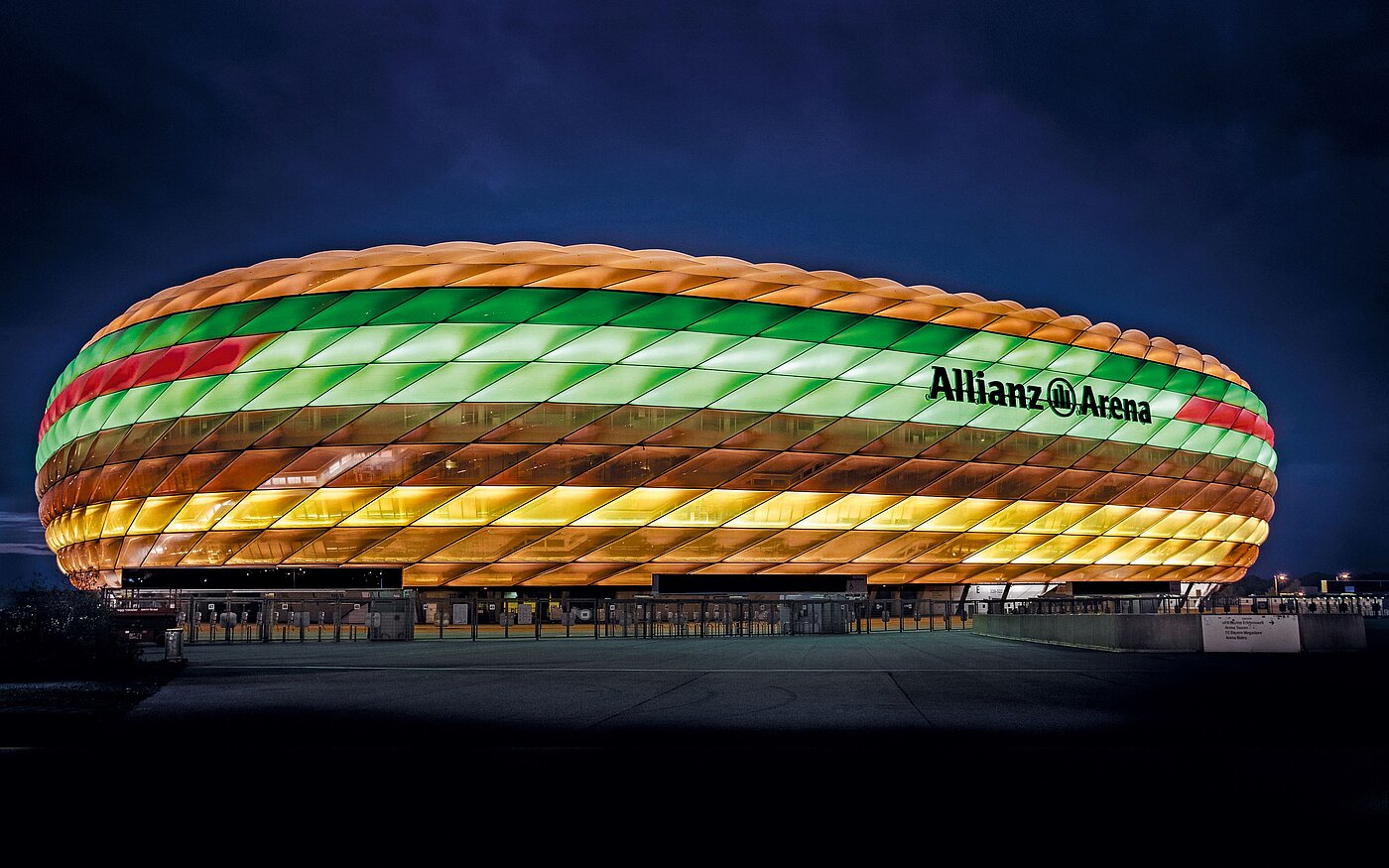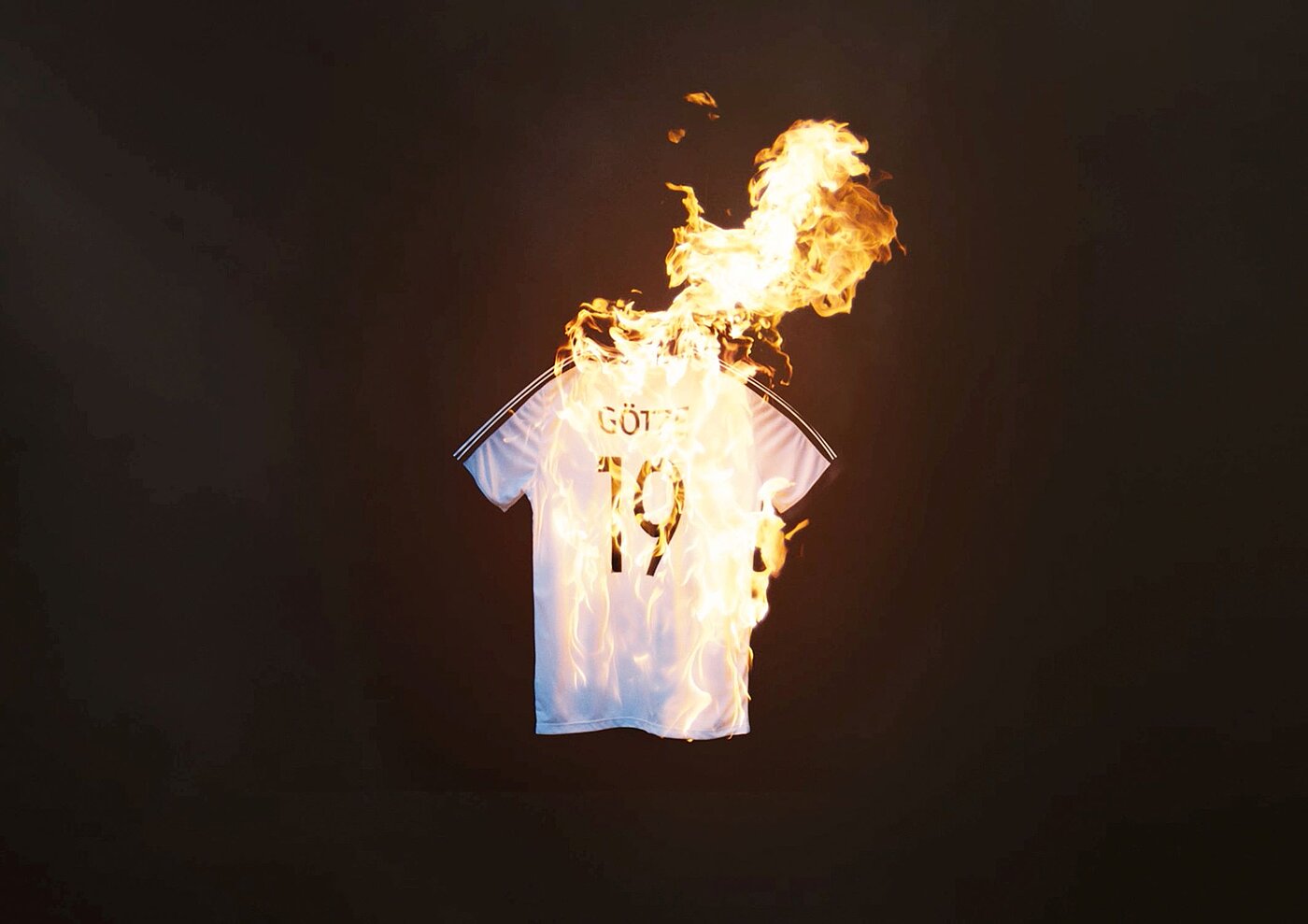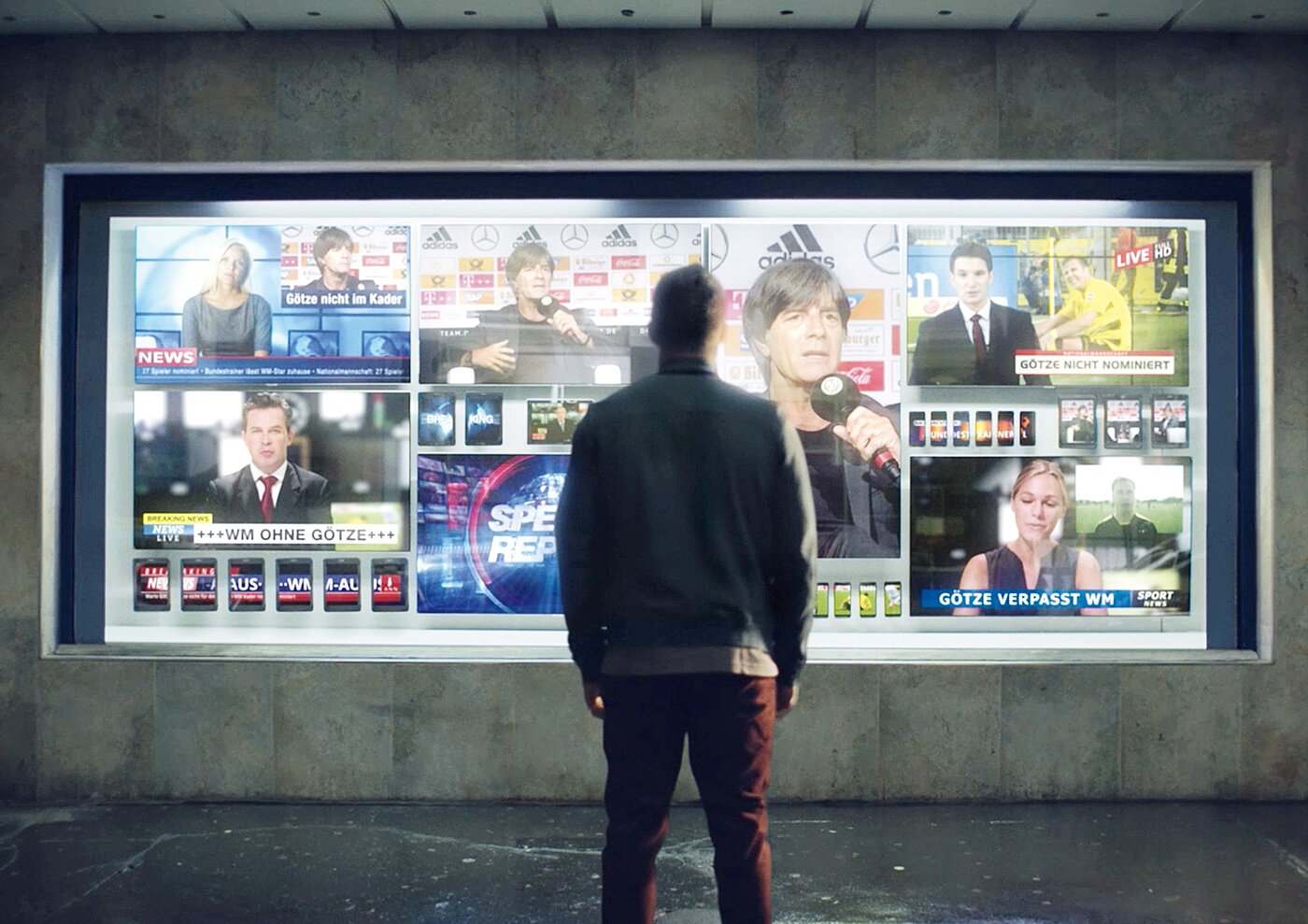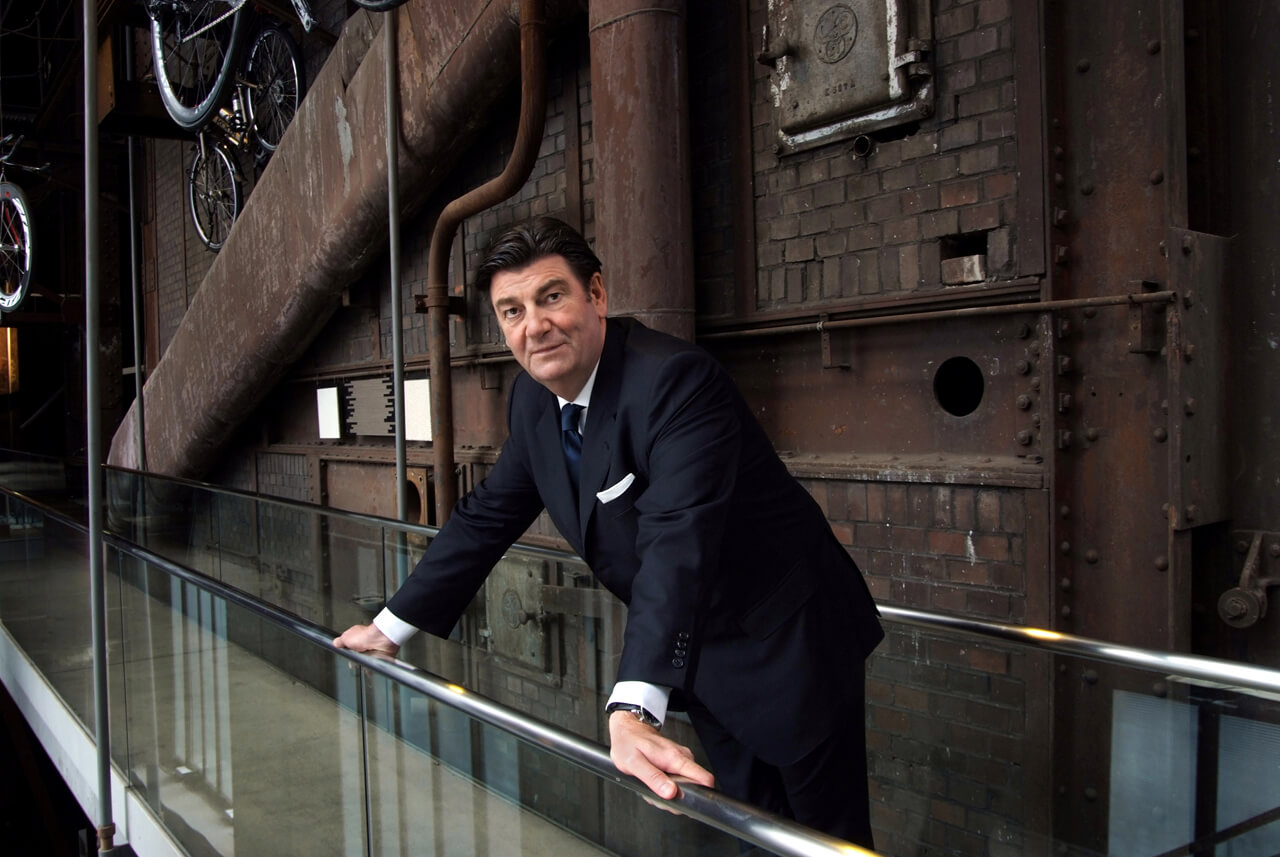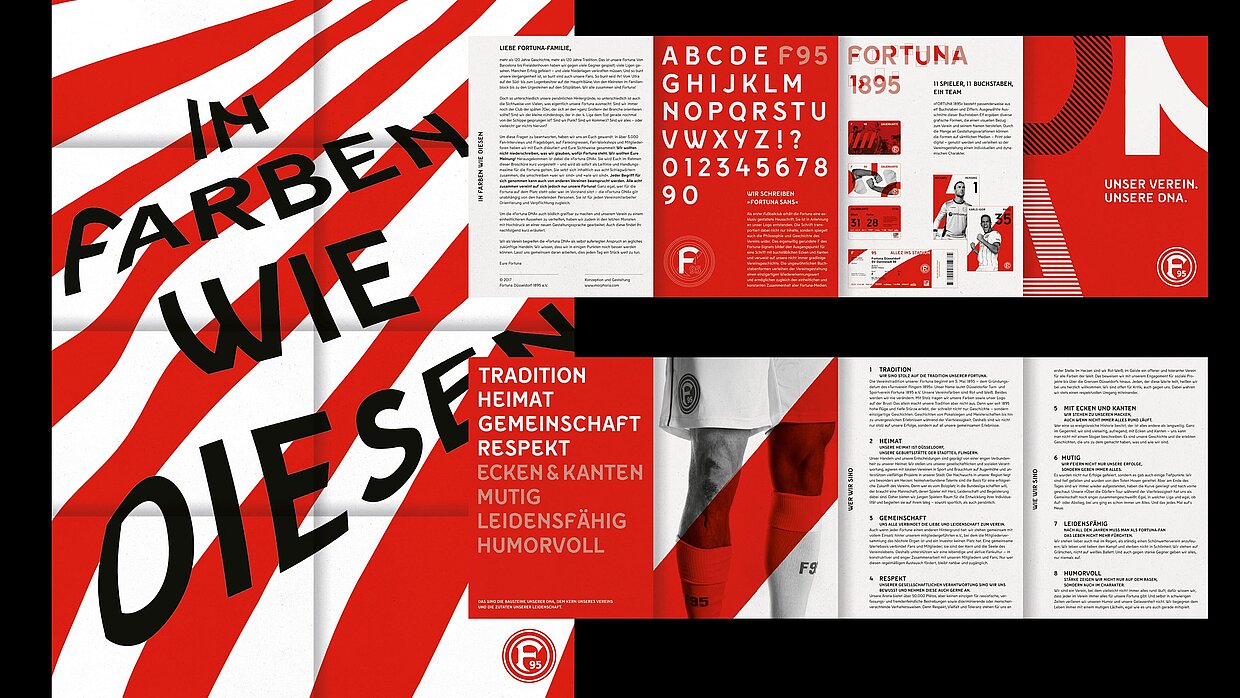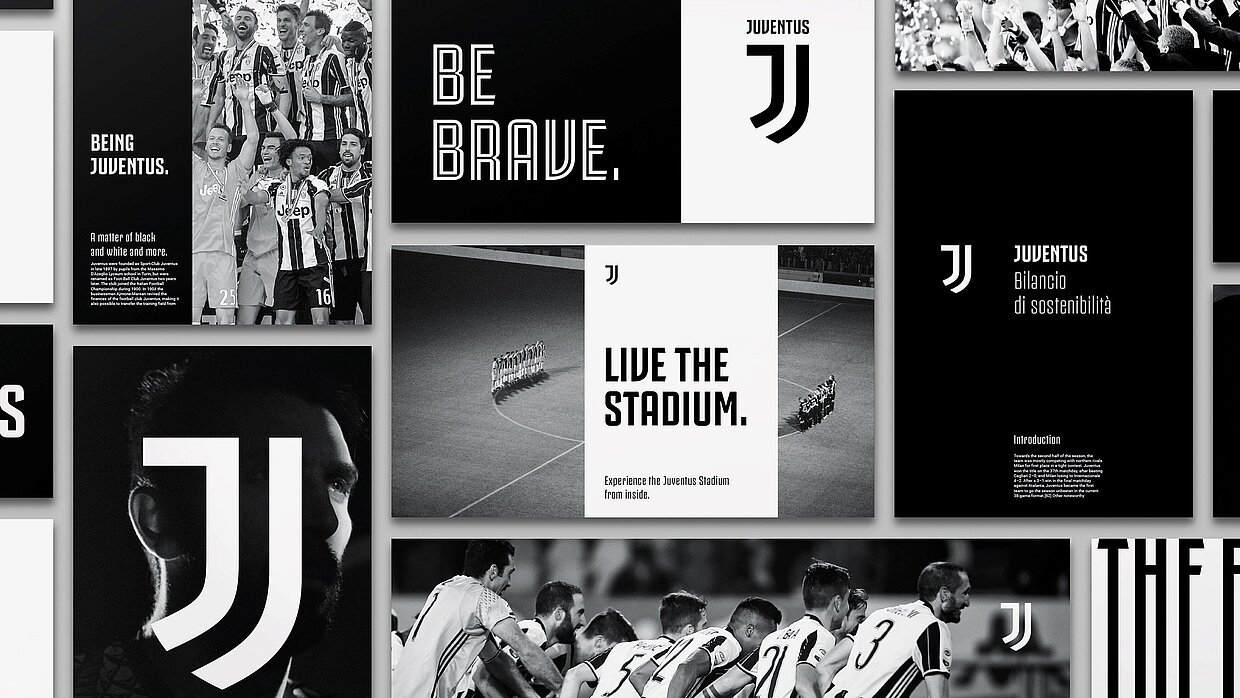
Visual identity and emotional connection
The visual identity of a club or national team – expressed by logos, colours and jerseys – contributes significantly to the emotional bond between fans. The organisation of major tournaments like the UEFA European Championship therefore often leads to heated discussions about the football kits, probably the most important identity feature of a football team. In this context, the current jersey of the German national team recently caused an uproar, making it clear that nowadays it is no longer just the playing ability of the teams that is relevant but also the branding.
Stadium architecture between live experience and advertising boards
Europe’s largest football stadium is the famous Camp Nou in Barcelona. Almost 94,000 fans can watch the home team, FC Barcelona, and their opponents play here.
Newer stadiums, in particular, are designed to give spectators and players the best possible experience. In addition to sophisticated security and catering concepts, the branding of stadiums is a top priority. After all, guests should know who they are dealing with and fans should feel at home and have as many points of contact with their club as possible.
In addition, football stadiums themselves become advertising billboards: one example of this is the Allianz Arena in Munich, which resembled a giant burger for three days in 2016 for advertising purposes. This project was honoured in the Red Dot Design Award.
Football players as testimonials for clubs and advertising partners
Stadiums and merchandise are the primary means by which fans identify with their club. In addition to the stadiums, which form a kind of home, the players are also an important part of club marketing. After all, the people on the pitch are not just there to achieve sporting success. Ideally, they become a figure of identification and popularity for the club.
Professional footballers are also exciting for brands. As testimonials, they reach a young and dynamic target group. In the context of major tournaments such as the European Championships, they even reach a group of people who are not fans of a particular club. For example, Mario Götze was the testimonial and face of the Samsung World Cup cinema commercial in 2018, even though he was not nominated for the German national team. The advert does not focus on his triumphs, but on the defeats of his career. The advert was awarded a Red Dot in 2019.
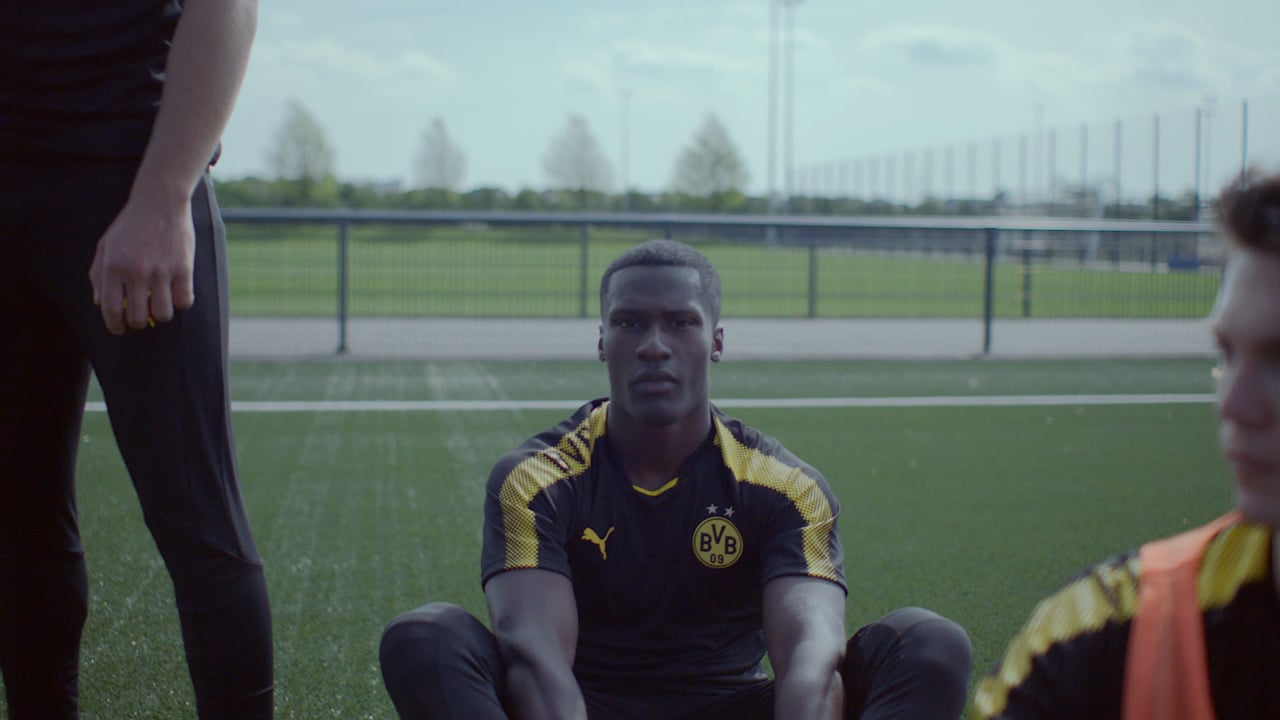
From the pitch to everyday life - Interview with Professor Dr Peter Zec
The major international tournaments have an impact that extends beyond the football context and into pop culture. Songs, colours and mascots accompany fans for a certain period of time, even those who are not interested in the tournament. This shows that branding in football is no longer only relevant on the pitch, but also influences various areas of our daily lives. Often without us even realising it.
In an exclusive interview, Professor Dr Peter Zec, founder and CEO of Red Dot, provides insights into the multifaceted interface between design and football:
How has design awareness in football changed over the last few decades?
In the beginning, it was all about determining the club colours and designing the club crest. At this stage, design did not play a role at club level. It was different with the players’ equipment. It all started with the now famous Adidas football boots worn by the German national team at the 1954 World Cup final in Bern. Adi Dassler invented them and revolutionised both the form and function and therefore the design of football boots by equipping them with so-called screw-in studs. At that time, nobody was talking about design. This only changed with the increasing medialisation of football by private television stations. At first it was the balls that were redesigned by Adidas for special events such as the World and European Championships. At the same time, the design of the shoes repeatedly changed.
This process was constantly accelerated by competing brand suppliers such as Adidas, Puma and Nike, until finally even the players’ brand loyalty was cancelled. Since then, players have been able to choose their own shoes. Design plays a significant role in this. Due to the omnipresence of football in the media, clubs also recognised the importance of design for a striking appearance of the team. Fan shops were set up that sold the home and away jerseys, which change from season to season. Today, no professional club can afford to underestimate the role of design.
Clubs have become global brands that want to appeal to a broad target group in addition to the die-hard fans. What has this transformation changed in the marketing of clubs?
There used to be no marketing in clubs. Everything revolved around sporting success. Then the commercialisation of football began with medialisation, which was accompanied by the introduction of marketing. Since then, sporting and commercial success have had to be harmonised. The Ultras in particular have repeatedly denounced the resulting commercialisation of football. However, this does not change the fact that every club now has to position itself as a brand in order to survive and be successful.
In Italy, they went as far as to remove the addition “FC” from Inter Milan’s logo - is this a consistent step in branding or is a football club detaching itself too much from its core business, namely being an “FC”?
In the Italian language, football is known as “calcio”. That is why the FC does not play as big a role in a club’s crest there as it does in other countries. In addition, the FC was very difficult to recognise in the old club crest. It was somewhat confusing, almost chaotic in design. By abandoning the FC, the crest now looks much “tidier” and clearer. This was a successful step from the crest to the logo. The core business of being an FC is not affected by this. However, this is certainly an advantage for brand development. Incidentally, there are several football clubs in Germany that have emerged from associations for physical education (German: Verein für Leibesübungen) and therefore have VfL in their crest.
How sensitive do designers have to be when rebranding a club, for example, in order to avoid upsetting the traditionalists, the long-standing fans?
Designers have to be very sensitive and understanding when designing brand-relevant elements of the club. They often have to strike a balance between tradition and innovation.
The team jerseys are particularly close to the fans. Their look does not entirely determine the love for the club, but often the interest in the shirt as a lifestyle or fashion accessory. In your opinion, what aspects are important to consider when designing football jerseys?
First and foremost, football jerseys have the function of identification. At the same time, they are important touchpoints for the club as a brand. The design is determined more by fashion aspects. They should correspond to the spirit of the times in fashion. At the same time, the players also have to look attractive and dynamic in them.
Can you understand the uproar surrounding the current football jersey of the German national team?
No, I thought the green away jersey was much worse. The new football jerseys suit the players, especially when they win in them.

Some clubs have had their own font developed. In Germany, for example, Hertha BSC, whose font was also honoured in the Red Dot Award: Brands & Communication Design. How influential is a font in the brand image of football clubs?
Fonts have a formative influence on the corporate design, which in turn is an important component of a brand. This is just as true for football clubs as it is for all companies that rely on identification, conciseness and authenticity. It therefore makes sense to give football clubs a distinctive corporate design for their brand identity, which can also include their own font. But just as with commercial enterprises, success must always come first. Even the best branding cannot replace this.
“The Swedes are not Dutch – you could see that very clearly”, Franz Beckenbauer once said. He was of course referring to their style of play. But you could also ask: does every nation have a design line in football that makes it recognisable?
Italy is considered a great nation for fashion and design. This is also how the Italian national team presents itself. Italian footballers are always very well dressed, from their tracksuits to their jerseys on the pitch. This also applies to the French, by the way. For several years now, the Germans have been trying to move away from their fighter image by wearing more fashionable jerseys.


